India’s biggest tax reform is weaving a disaster for the famed Banarasi sari industry
“I am facing a bit of trouble buying food,” admitted Altafur Rehman. The only earning member of a family of four, Rehman’s income from weaving Banarasi silk saris has fallen to less than half of the Rs800-1,000 a week he was making in September last year.
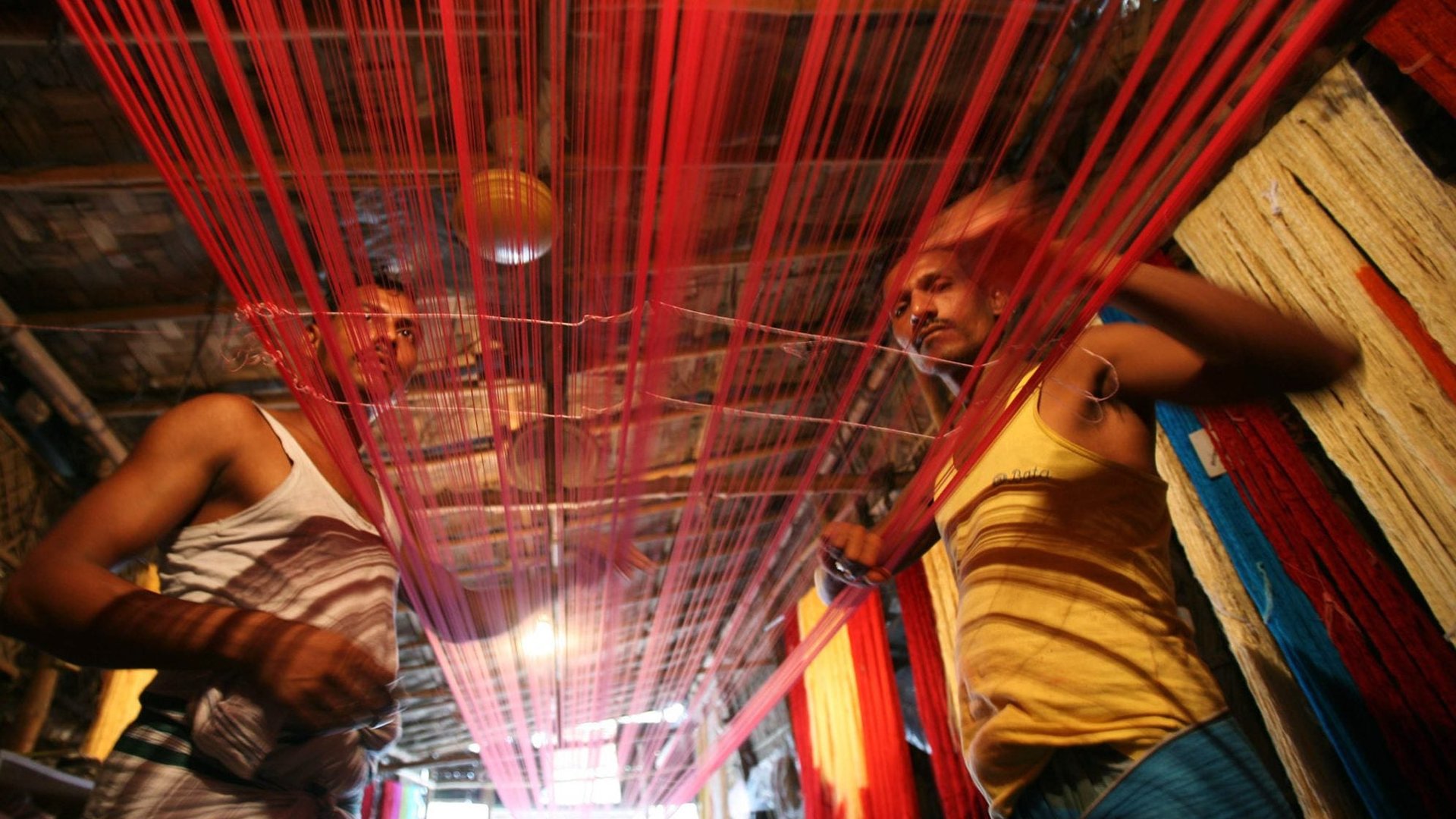

“I am facing a bit of trouble buying food,” admitted Altafur Rehman. The only earning member of a family of four, Rehman’s income from weaving Banarasi silk saris has fallen to less than half of the Rs800-1,000 a week he was making in September last year.
Now he makes Rs400 in a good one. “It will drop to Rs300 or less,” he predicted darkly. At least he is still holding out.
Dozens of his neighbours in Varanasi’s Jaitpura-Chhora colony of weavers have abandoned their craft, opting to drive cycle-rickshaw or autorickshaws, said another weaver, Sohrab Ali. Till September 2016, HAR Fabrics, run by Ali’s uncle Abdul Hasan, employed over 40 weavers. He now has 20-25 empolyees.
The sari business in a city that has a textile tradition dating back to at least the 16th century has been struck a body-blow by two government policies in under a year—demonetisation in November and the introduction in July of the goods and services tax (GST).
“Business is down to 50% of what it was,” complained Rajan Behal, the general secretary of the Banarasi Vastra Udyog Sangh, a trade association.
Employment generator
For customers who can afford them, the intricately embroidered Banarasi saris are a valued part of the north Indian bride’s trousseau. Saris produced in this region can sell for over Rs2,00,000. The cheapest, starting from Rs300, are made of synthetic fiber on power looms. The most expensive are made of silk and incorporate silver or gold thread. A sari that sells for Rs5,000 can take a handloom weaver three-four days to make.
According to Behal, the Banarasi sari trade is valued at about Rs5,000 crore per year. According to another veteran in the business, it provides employment to over five lakh people in Varanasi district alone.
The trade received a jolt in November when prime minister Narendra Modi decided to demonetise Rs500 and Rs1,000 currency notes overnight. Since most transactions were in cash, weaving in Varanasi came to a near-halt. The introduction of the GST on July 01, subsuming several other levies previously charged by states and the centre, has made the chances of recovery look very bleak to some in the trade.
GST regulations require enterprises to file three returns per month along with all documents on sales, purchases and tax levied and paid—a massive challenge for traditional small businesses that procure material, raw and finished, on credit and which have thus far bothered little with formal invoices and receipts.
“90% of the business is in the unorganised sector employing large numbers of weavers who are uneducated and unable to handle the technicalities of GST,” said Behal of the Banarasi Vastra Udyog Sangh.
Even wholesalers, who buy Banarasi saris from weavers and distribute them to shops across the country, have been left floundering. Till July, they did not charge any tax at all from customers, choosing to absorb the cost themselves. Their decision to pass on the levy to customers has led to an increase in prices of saris by as much as 20%. “Till they exempt us from GST, there is no hope of recovery,” Behal said.
In June, when the government decided to levy GST on textiles, Varanasi’s weavers and traders went on an eight-day strike to protest the move. When no relief seemed forthcoming, they struck work again from July 09 to July 14. They are especially irked that prime minister Narendra Modi, who represents the Varanasi constituency in Parliament, has refused to meet members of the association.
Credit business
Most weavers of Chhora are simply following the tradition of their forefathers. Most wholesalers in the labyrinthine lanes of Varanasi’s Chowk area are fourth or fifth-generation traders in the business. Export and wholesale firm, Hartirath Ram Daya Ram, is 110 years old and was established by the great-grandfather of Sanjay Wahi, who now runs it. Behal’s wholesale business was established by his great-grandfather. Thread-supplier, Ramjilal Chandak inherited his shop, Kanhaiyalal Jethmal, from his grandfather.
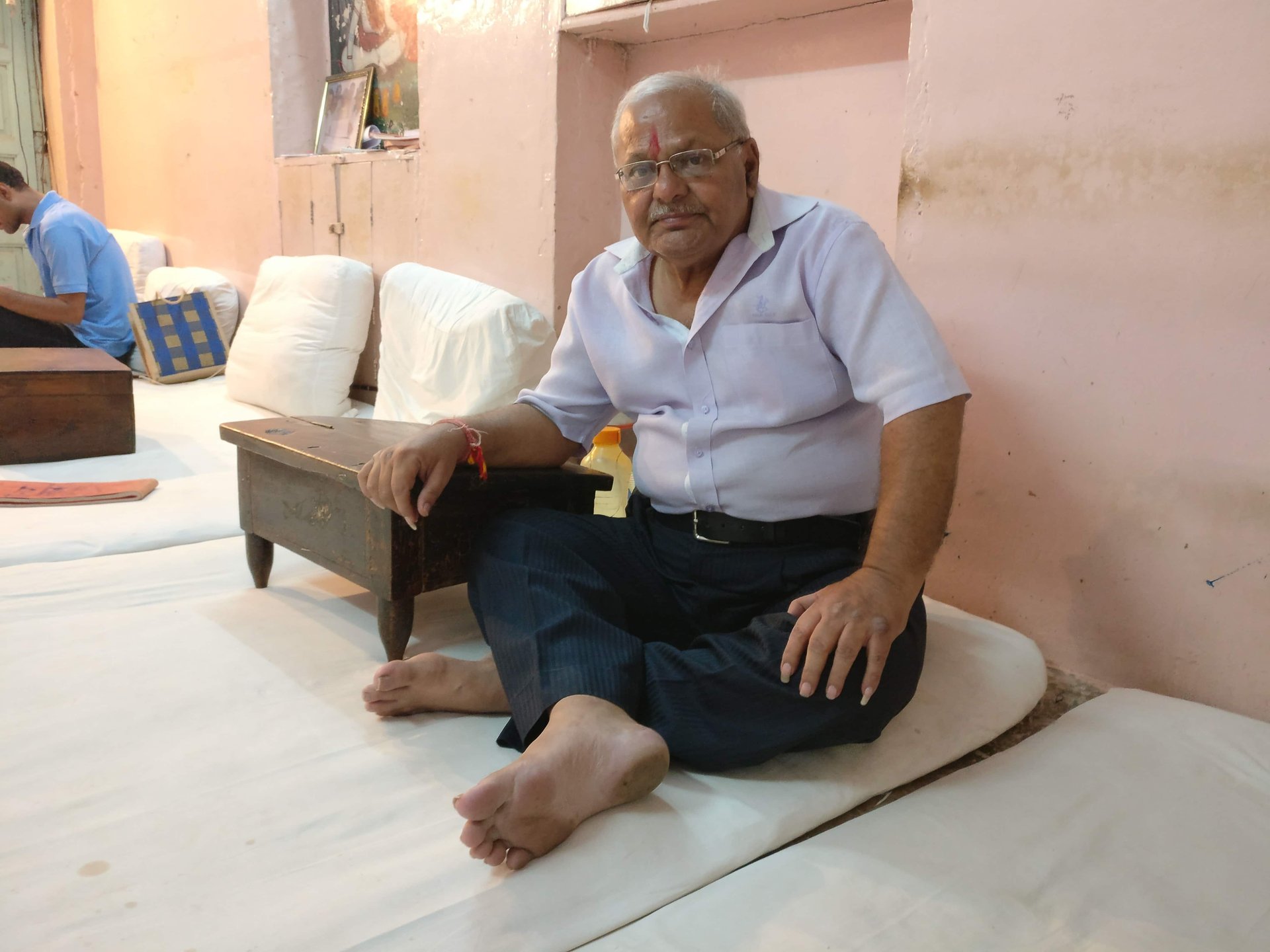
Over generations, the weavers of Jaitpur-Chhora, traders from the Chowk, and those involved in the dozens of allied activities such as warping (to make the thread) and dyeing across Varanasi district have established a way of doing business on udhaari, or credit. This has worked well for small, family-run establishments without large savings.
In this method of working, weavers take raw material such as thread from suppliers but pay them once they have received money from the wholesaler. Retailers stock finished saris given to them by wholesalers but pay them months later, after the goods have been sold. Everyone gets paid eventually but at a later date that is not always fixed.
The GST system, which requires invoices to be generated instantly for every transaction, has struck at this system. Everyone from the vulnerable weavers to the relatively prosperous traders has been affected.
Crumbling chain
In an immediate fallout, suppliers of raw material such as fibres and zari—gold or silver thread—stopped giving weavers material on credit and started insisting on immediate payment. “How could we give?” asked thread-supplier Ramjilal Chandak. “We have to file three returns in a month and produce all the bills.”
But weavers simply did not have the surplus income to make instant payments on all the material they need.
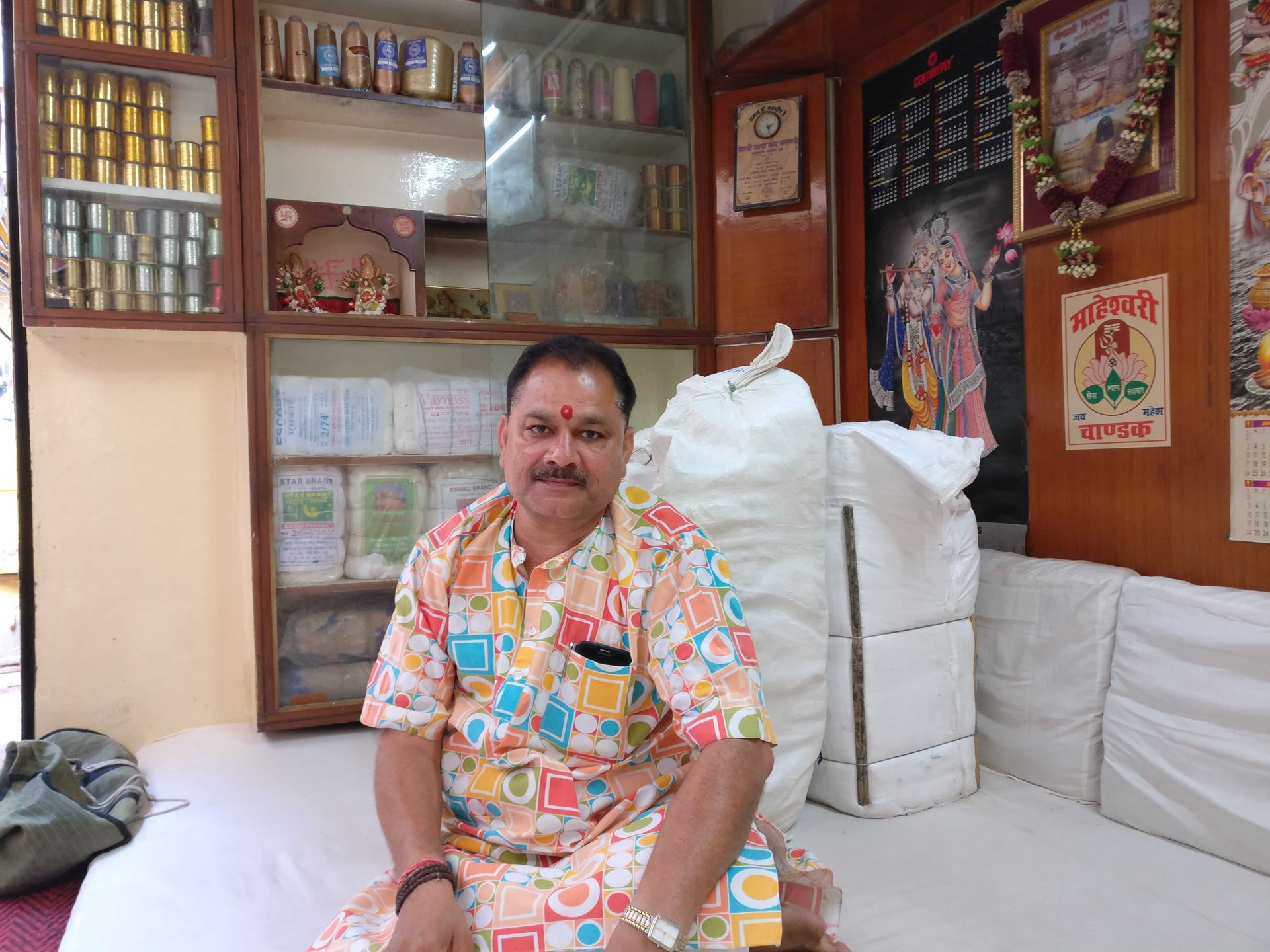
In addition, weavers were confounded by the varying rates of GST on different materials. Chandak listed out the most common ones—5% on cotton and silk, 12% on zari or gold thread and 18% on polyester.
The high tax on polyester, used very frequently, dismayed weavers. “It increased the cost of raw material for [weavers] considerably,” said Chandak.
The sizes of purchases of thread shrunk and the cost of production increased. “Business had dropped by 60%-70% last month,” said Chandak. “It is picking up a bit now that people are getting used to it. But most weavers think GST is a hassle.”
Silent looms
For weeks after the strike, all the 500 or so looms in Chhora had fallen silent. They have staggered back to action with some units like Hasan’s even registering for GST. But, as he said: “Weavers have work only for a few days in a week. Our business is down by 60%.”
Though Hasan’s unit registered for GST in August, it has not yet filed a single return. “We could not get the paperwork together,” explained Hasan. “We cannot figure out when to generate bills, how much GST will be applicable and whom to charge. We waste a lot of time running to banks and have spent entire mornings photocopying papers.” Many dealers he works with are yet to register and reluctant to generate invoices.
There are other problems. Hasan’s brother, Noor-ul-Ain is trying to figure out how much GST to charge for a sari in which they have used both polyester and cotton—a popular combination for cheaper powerloom saris. They are concerned that the 18% tax on polyester and the taxes levied at every stage of production will make even these expensive. Consequently, powerloom operators have seen their income drop. Jamil Ahmed made Rs1,500 in a week before GST. Now it is Rs700.
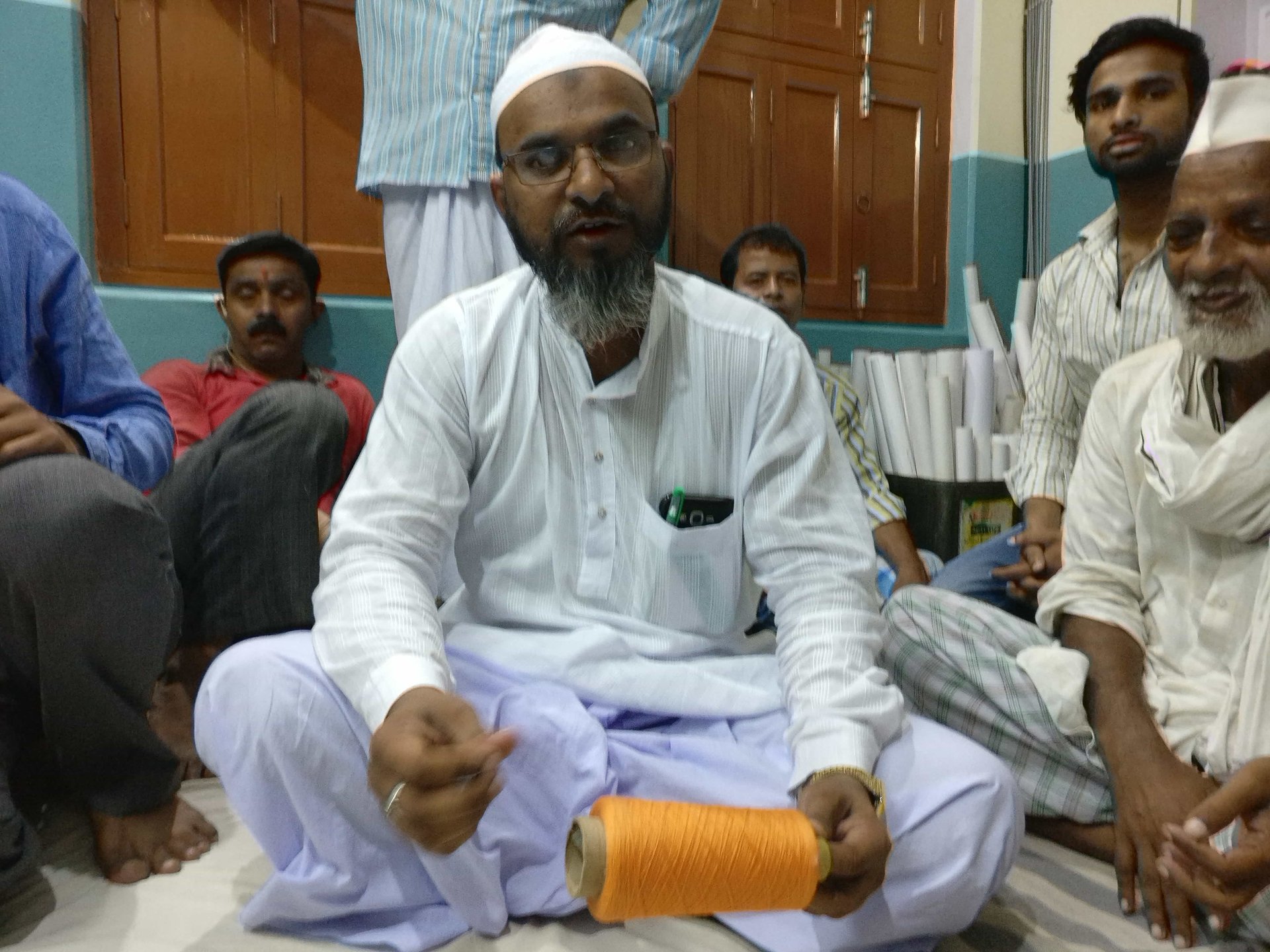
Admitting defeat, Hasan appointed a chartered accountant in September. He will charge Rs5,000-Rs6,000 to fill each form, a further burden on the strained resources of HAR Fabrics. But at least, he is trying. “Ninety-five percent weavers are not giving anyone bills and have not registered for GST,” he said.
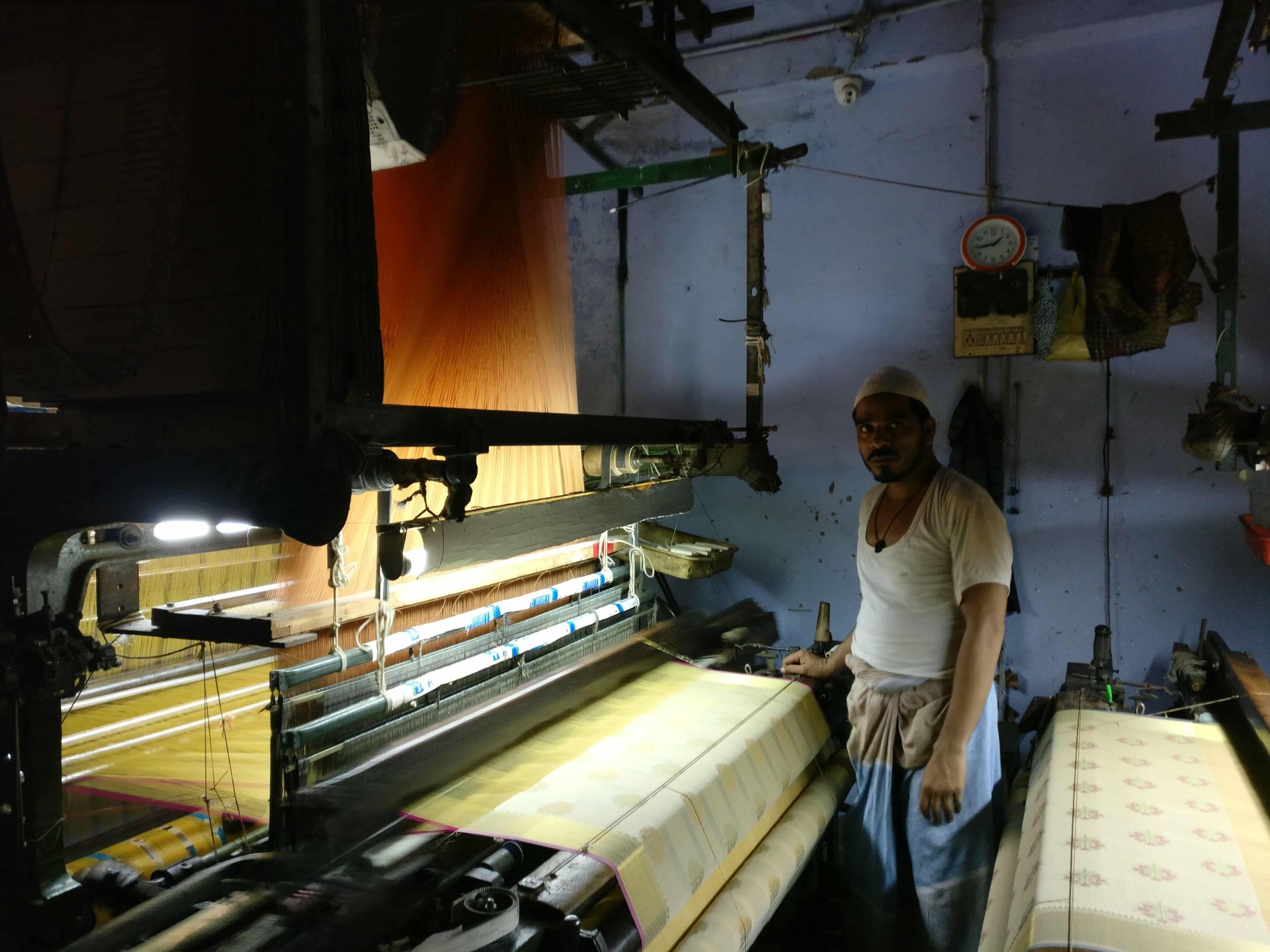
Chowk traders
It is not just the uneducated weavers who find GST a challenge. On Sept. 27, Behal deposited Rs15,092 in his enterprise’s GST account at the bank and was given a receipt. The next day, he received a text message from the bank saying the payment had been reversed. Behal was livid. “Now the bank will be closed for four days (for Dussehra and the weekend) but we will be fined for the delay,” he complained.
Being the only organised part of an unorganised sector has had interesting results for traders. Wholesaler and exporter Sanjay Wahi pays GST on behalf of the unregistered weavers he buys from and intends to claim “input credit.” He explained the system thus: “It is an adjustment. Instead of the weaver, I submit the GST charged by him on his behalf and I pay again the GST I charged while selling the same sari. The first becomes the ‘input credit’ and ultimately I will have to pay only the difference between the two amounts as tax.” He has not seen the input credit yet but is certain he will.
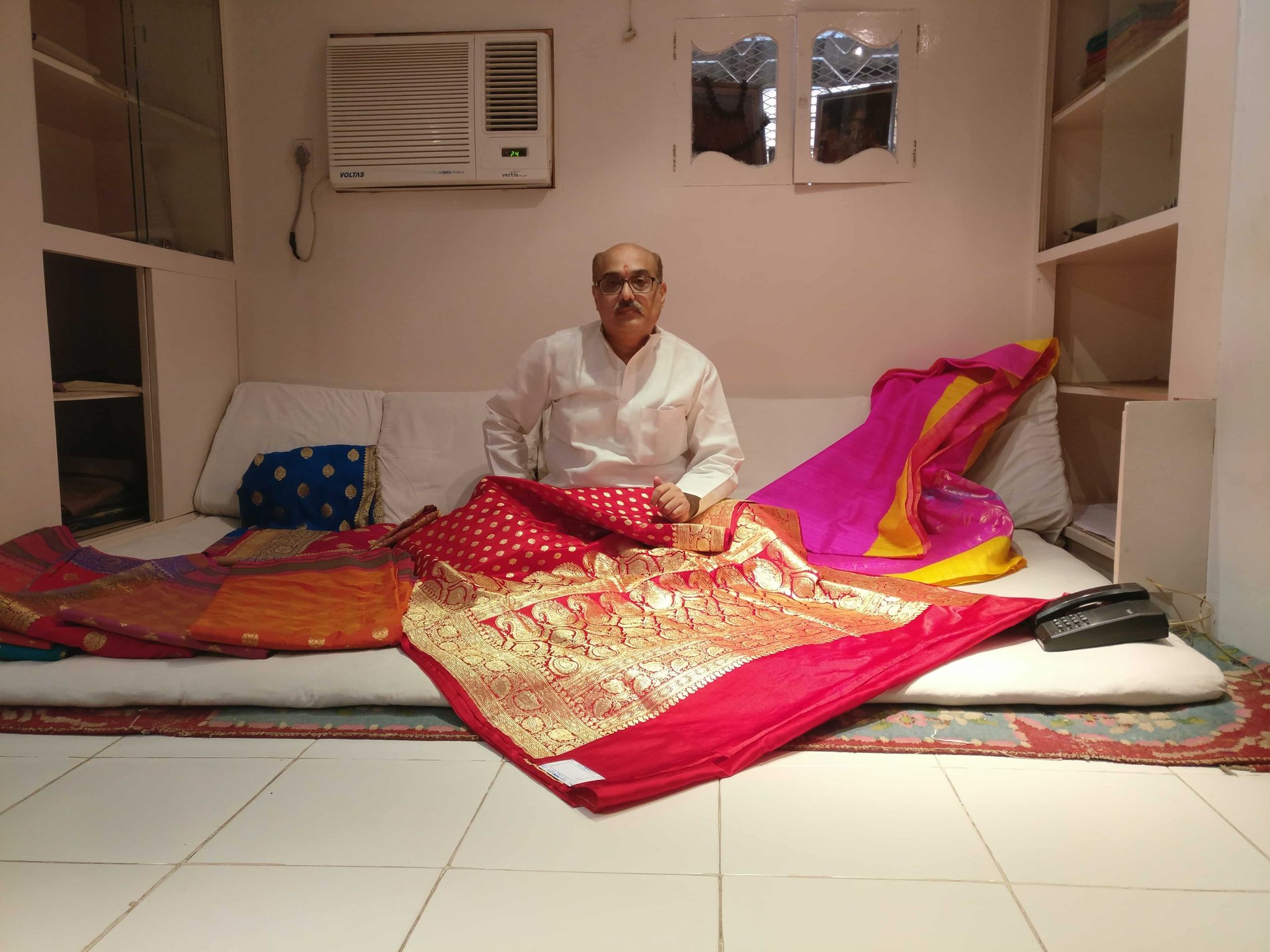
Wahi thinks that in the long run, GST will make the sector more efficient by forcing all sections involved in the production of Banarasi saris to join the organised sector. But it has led to immediate problems. Due to the disruption to production caused by GST, the traders have not been able to take advantage of fashion trends turning favourable to woven saris and away from embroidered ones, Sanjay Wahi’s son, Shrey, noted.
The input credit system means “blockage of capital of 5%” for him. Wahi’s business can take that hit. Behal is not so sure. “Most retailers will not have the capital to pay GST for their suppliers,” he said. The amount of capital required varies with the type of saris as well.
“The central government usually allocates about Rs6,000 crores of subsidies for the handloom sector every year,” said Behal.
“The money does not reach weavers anyway. It should withdraw this fund and exempt us from GST. Without that, the art of the Banarasi sari will die,” he said.
This post first appeared on Scroll.in. We welcome your comments at [email protected].